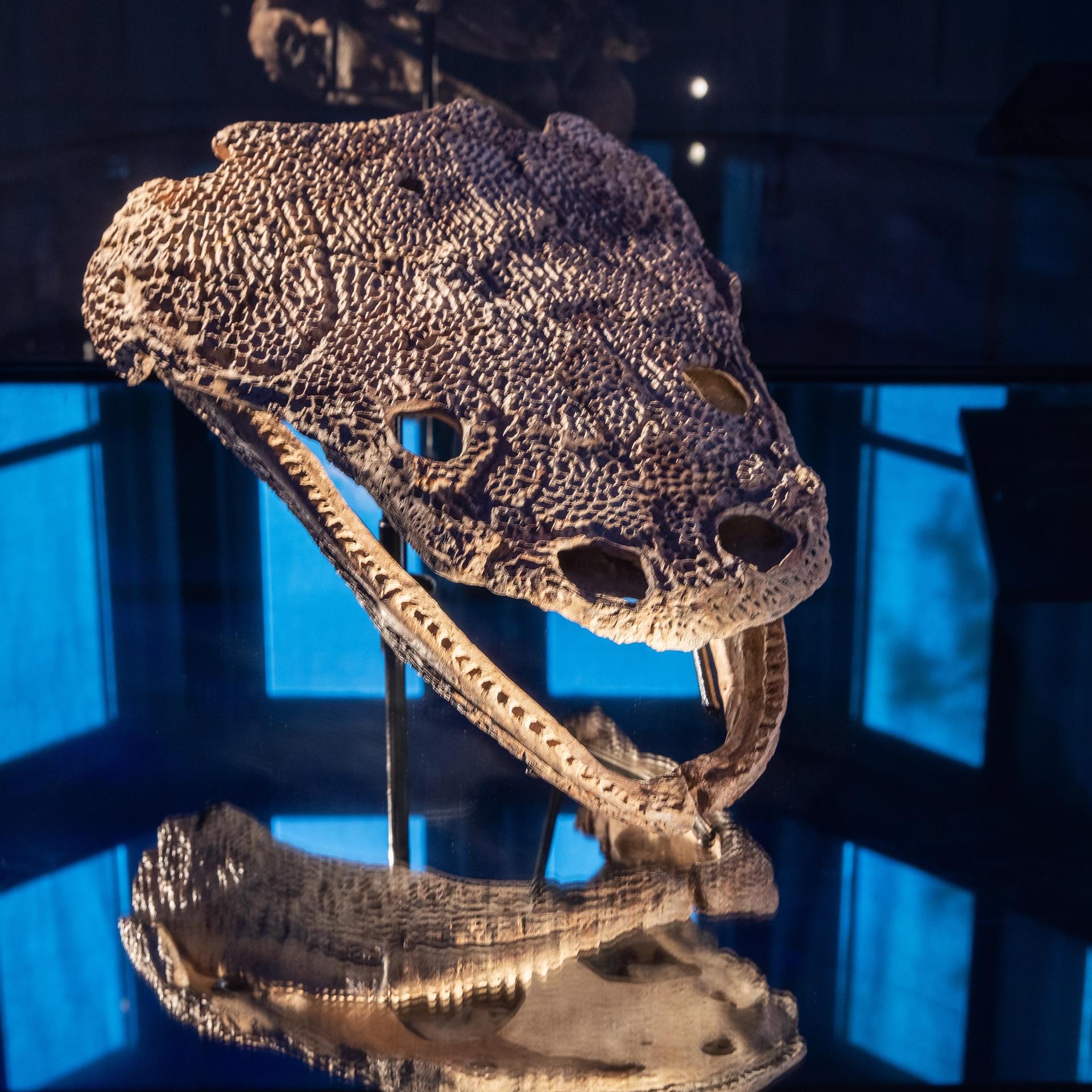Metoposaurus
Toadzilla of the Triassic

Metoposaurus was a huge toad that lived in the time when the first dinosaurs appeared, namely the Triassic period. Palm-like plants spread on land, where a mysterious creature leaves footprints in the dry sand – Chiroterium, known only by its monkey-like five-fingered footprints, prowls along the riverbank in the twilight. Down in the river, Metoposaurus swims around with its 3-metre-long and almost 500 kg body. Its head is flat, and a wide mouth full of pointed teeth has eaten its way through every fish it has passed.
The Triassic was dry and hard for an aquatic animal like Metaposaurus. During very dry periods, Metoposaurus drilled down into the riverbed, where it hoped to be able to remain moist until a bit more wet weather came again. A lot of Metoposaurus mass graves have been found, probably from creatures that grouped together in the last wet areas of the river. But this time they were unlucky; the river has dried up completely and they have not survived the drought period.
In the gallery you'll find a bone-map of the exhibited Metoposaurus. The red-highlighted areas indicate which bones is real.
Facts about Metoposaurus
Size: Up to 3 metres long
Weight: Almost 500 kg
Period: Late Permian to late Triassic period (280–216.6 million years ago)
Food: Carnivores
Habitat: In water
Locations: Germany, Italy, Poland and Portugal
